Atchafalaya Bayou, Louisiana, USA
I drift down a river so wide I cannot actually feel its movement, which is not to say that I am not moved. The bayou pulls me into its soporific embrace and encourages me towards calm. I succumb. Only after you still your body and quiet your mind will the shy bayou accept you into its fold and begin to share its secrets.
All life, it seems, has slowed to match the bayou’s syrupy pace. Cypress trees simultaneously stretch up towards the sun and melt down the canvas of the sky, whose color drifts every day from silver through bluebird to citrus and back again. Fingers of Spanish moss sway upon a breeze that’s barely strong enough to budge this honeyed air, pregnant with the lush scent of forest and saturated earth.
It is spring. Cypress trees drip with nesting snow-white egrets and magenta spoonbills, like Christmas ornaments strung up three months too late. Watch the boughs long enough and you’ll catch sight of a bed-headed chick that’s still in its awkward teenager week and not quite ready to leap into the world. Down at water level, a log shivers and splits itself in two. The bottom half resolutely remains wood, but the top shapeshifts into a dinosaur with far too many teeth. One unblinking yellow eye fixes upon you. Even if you stare back, it is hard to grasp the grace with which this creature divorces itself from log and marries itself to river. Don’t blink, or you’ll miss the split second when the eye disappears too, down into the great primordial soup.
At the edge of this viscous world, a most curious human culture has evolved. Start with French stock and Canadian roots, add a hefty dash of Creole spice, cover and let simmer over a low flame for 260 years. Et voilà: the Cajun culture. The pulse of Cajun life matches that of the bayou – steady, warm, meandering. Allow yourself to sink into it. Stroll past cast-iron balconies that drip with Mardi Gras beads and humidity all year round. Wash down sugared beignets and spiced crawfish with mint juleps. Hear the whispers of the bayou woven through the melancholy streetside jazz. Open your ears and your soul, and let it all in.
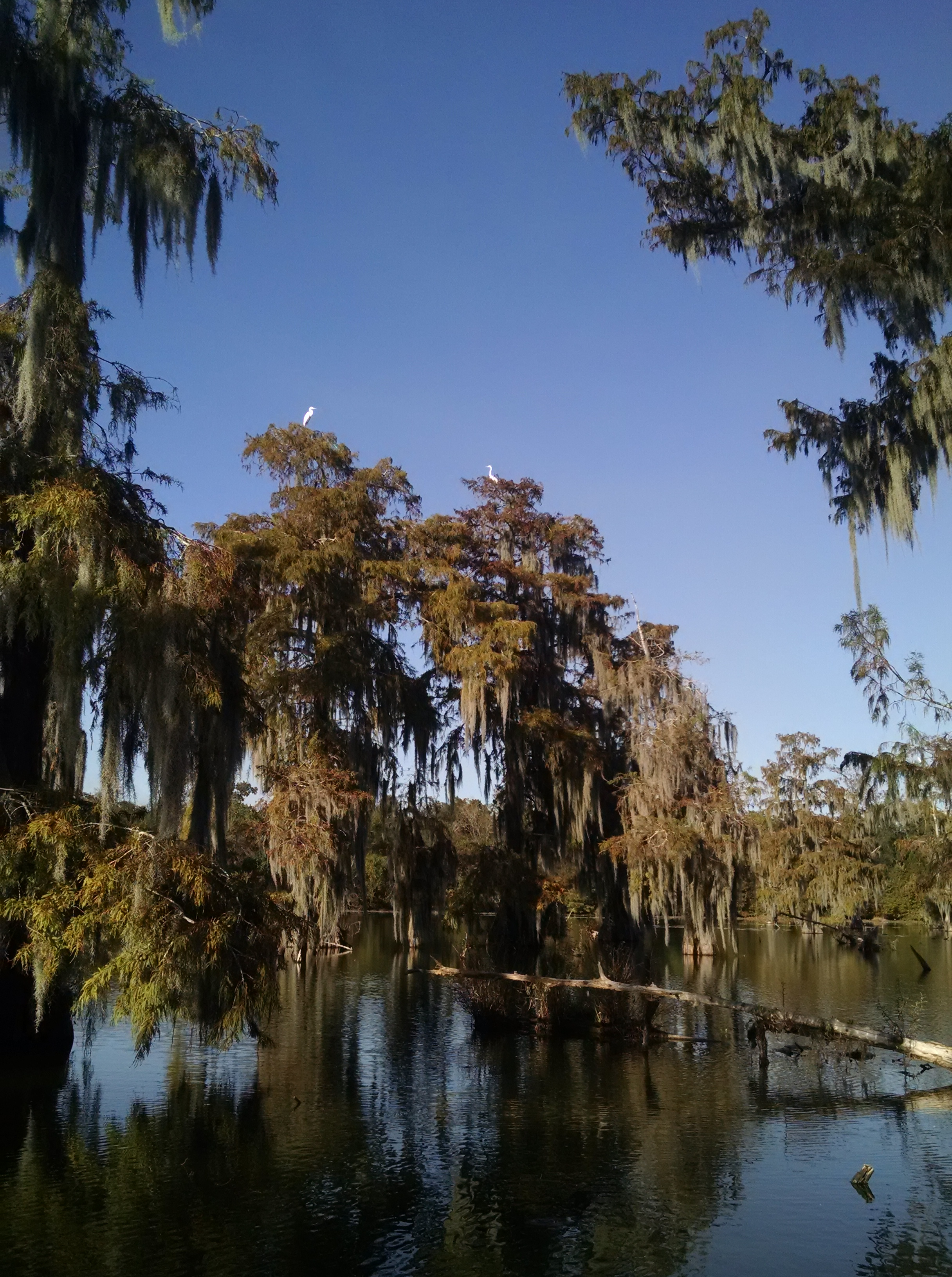
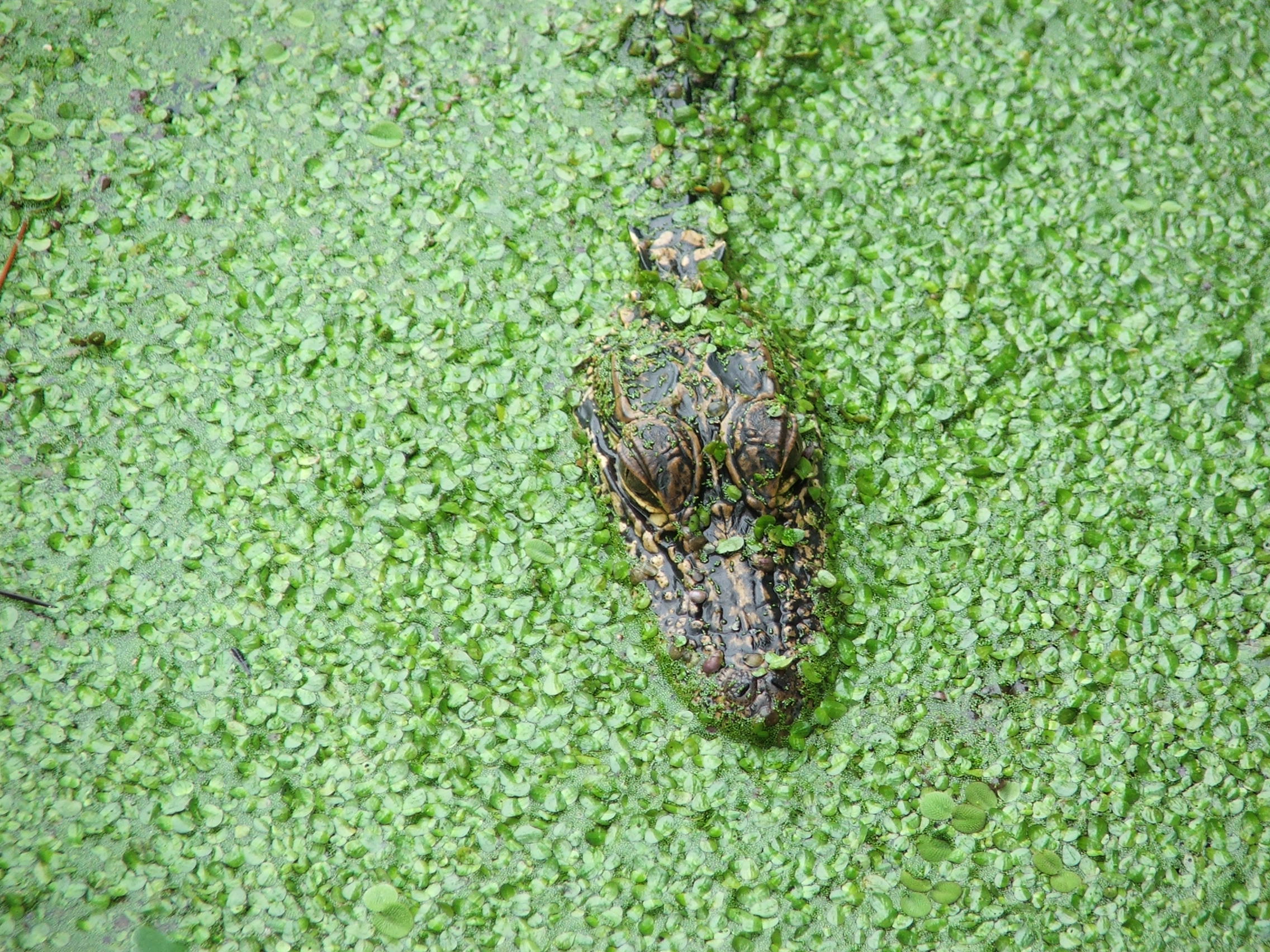


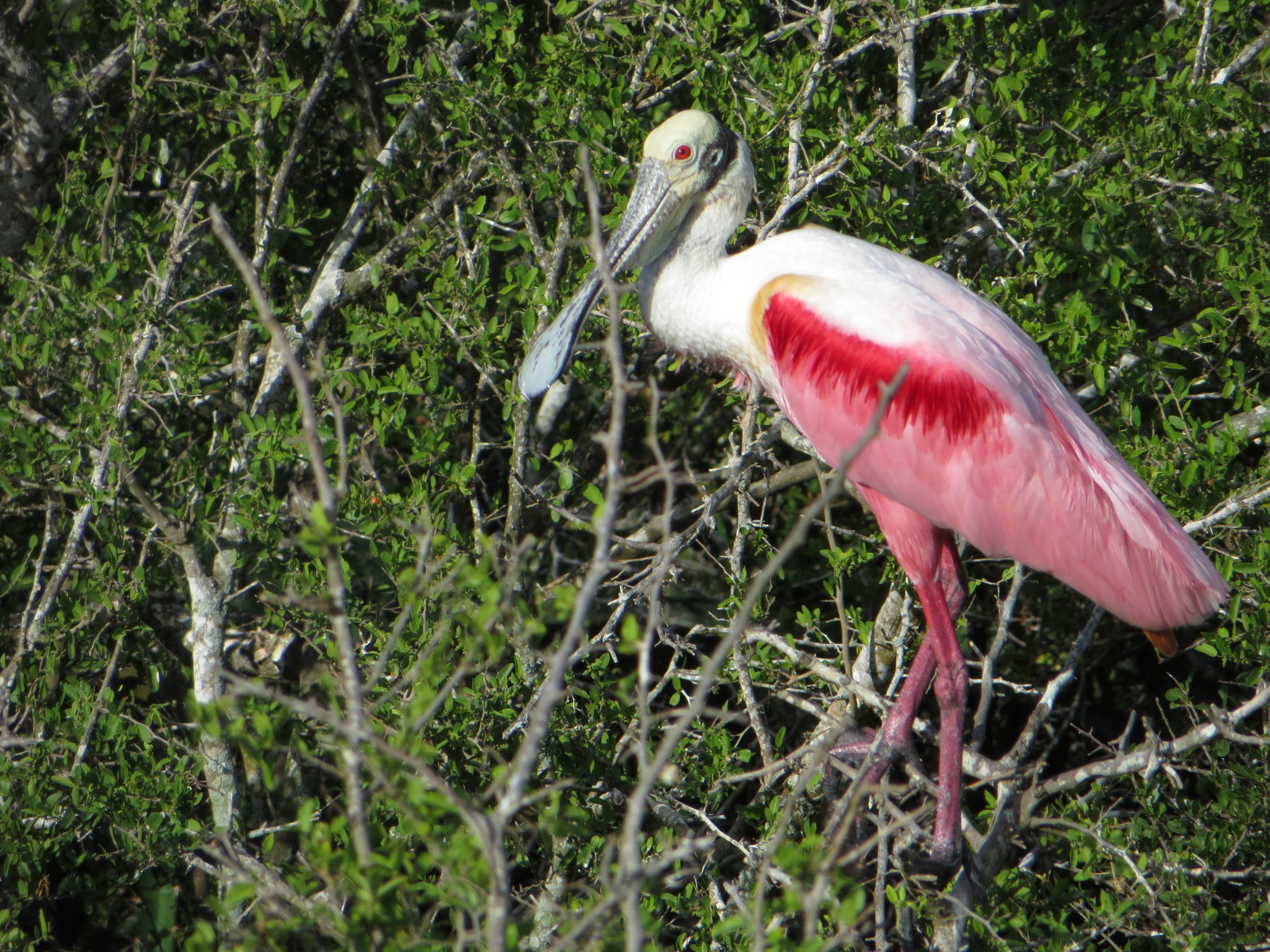
Big Bend National Park, Texas, USA
I awake in the heart of a long-dead volcano. I haven’t actually seen it yet, having driven up the winding desert road in the dead of night, but its silhouette had blacked out half of the stars in the clear desert sky as I’d set up my tent by headlamp. Even now, zipped snug into my sleeping bag and waiting for dawn to break, I can feel it out there. Finally I unzip the tent flap and spill out into the cool autumn air. Clasped hands of red rock cup the entire campground, their fingertips painted magenta by the waking sun. In the distance, a chip in the mountain-cup affords a peek out into the surrounding purple desert far below. Chisos Basin, this dead volcano’s given name, has been eroding for millennia, but it still looms over the surrounding landscape like a citadel.
Regardless of which direction I point my hiking boots, a trail rises to meet them. Up high towards the rim, where I perch on a rock to let my boots swing out into the abyss. Down and across to the chip, which turns out not to be a chip at all but a canyon with cliffs towering 200 feet above my head. I scramble past prickly pear cacti and blood-on-snow-colored madrone trees. I stomp my boots periodically to ward off any nearby Mexican black bears, which have naturally wandered back into this basin after 50 years away.
The second day is my golden birthday: turning 27 on the 27th. To celebrate I arise early and disappear into a hidden valley socked in by morning fog. My crunching footsteps make a too-sharp sound in the otherwise muted air. Silver dew gathered on grasshoppers’ wings and blueberry-like ocotillo leaves hanging within arm’s reach are the only things I can see, even though the Lost Mine trail is famous for its panoramic views. Undeterred, I hike on, my worldview shrunk to include only myself and the ground beneath my feet, which is dotted here and there with the odd ambling tarantula and early autumn flower.
At the viewpoint a curtain of grey mist proudly presents itself. I have nothing better to do and nowhere else I’d rather be than alone on a misty mountaintop, so I pull out a battered copy of a beloved book and sit down to wait. Mother Nature is feeling magnanimous today and within ten minutes, I am interrupted mid-sentence by sudden warmth spreading across my face. Sunlight pours through a rip in the cloud and spills into the panoramic void that has opened beneath my feet. Happy golden birthday, the golden light says as it swishes from one end of the valley to the other, putting on an entire show for an audience of one. I only get fifteen minutes before grey overtakes the gold again. It is enough.
Beyond the citadel oasis of Chisos Basin, the desert wears subtler colors of ochre and lilac and cream. Roadrunners dodge before my car and I infallibly laugh every time I see one, greeting them with a meep meep. I toe the edge of the turbulent Rio Grande, the cliffs on one bank claimed by the United States and identical ones, just a stone’s throw away, claimed by Mexico. It seems there are invisible thresholds everywhere I look. Borders between this country and that, between this age and that. For today, at least, the golden sun is shining on both sides of the river.
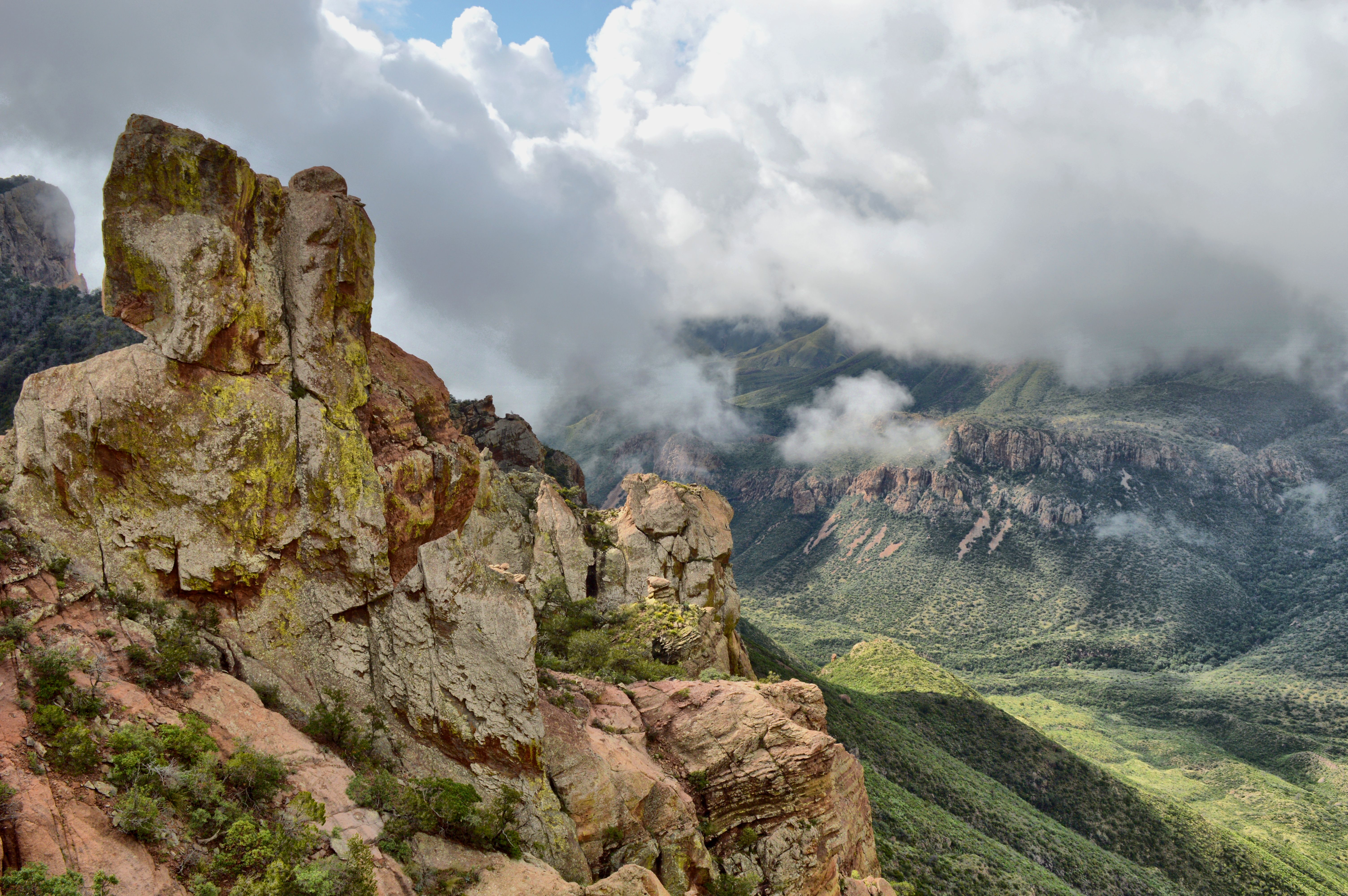




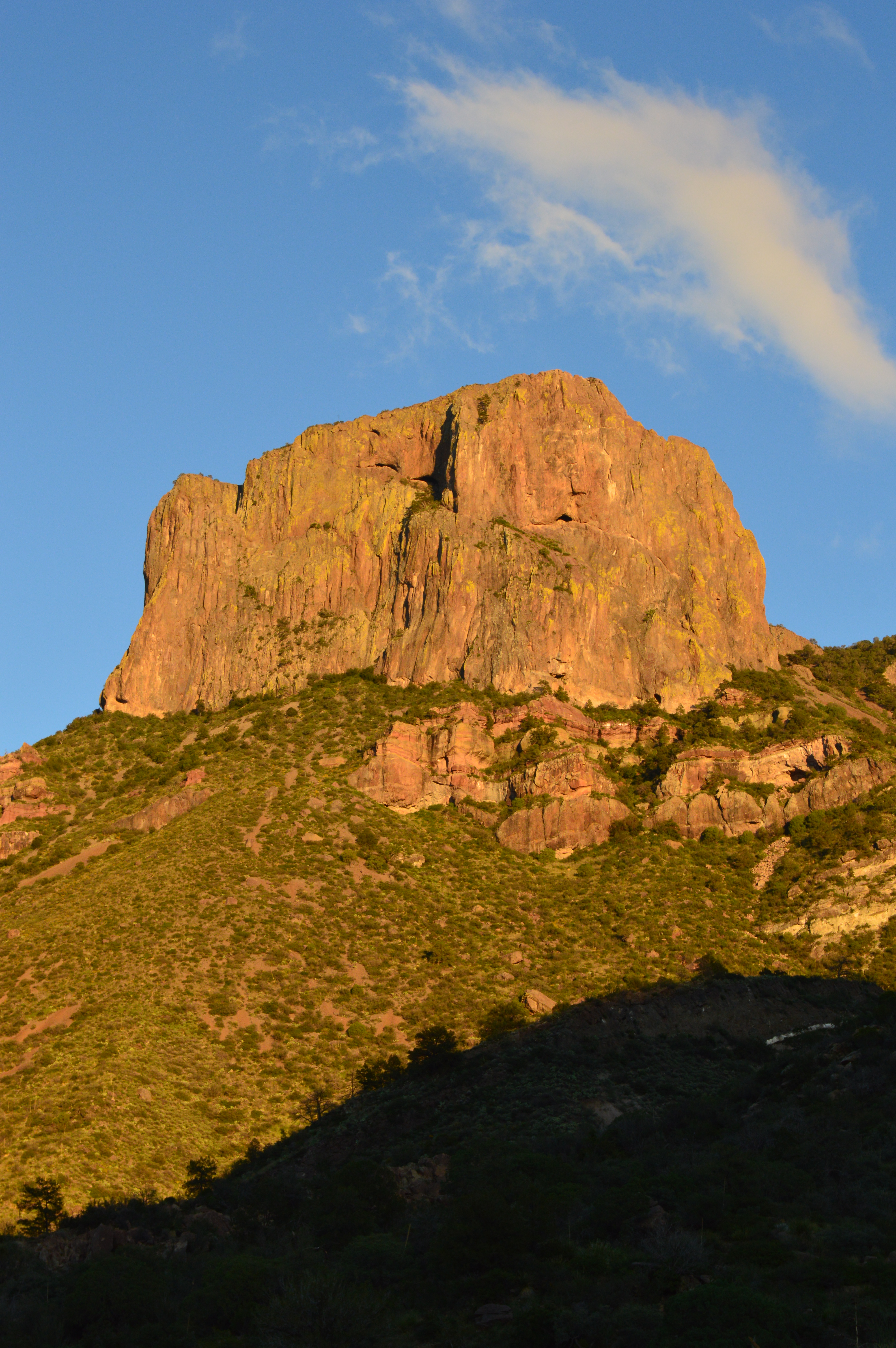
Mackinac Island, Michigan, USA
Every morning the symphony begins with horseshoes on asphalt. Carriage drivers chime in with gentle clicks and verbal cues, guiding their equine teams by name. Strapping porters on rickety bikes whiz to-and-fro, their mounts laden with heaping piles of freshly delivered newspapers or guests’ suitcases that have been lashed to every available surface. A gentle puff of wind teases my hair and delivers the scent of a thousand lilac flowers that have been blooming here for centuries. It is early, my favorite time on Main Street, when the island’s song is still simple and pure. My footsteps keep time with the miniature morning waves caressing the rocky shore. Step, step, swish. Step, step, swish.
With time the waves will grow louder, frenzied by winds galloping across the Straits, for Mackinac is an island wedged between. She sits between two of the world’s greatest lakes, between two peninsulas of Michigan, between past and present, although she remains wary of the latter. She even perches between my own childhood and adulthood as a sort of geographic touch-stone for a life lived all over the planet. It is hard not to stumble over all the memories that I’ve carelessly left strewn all over the island. I climbed lilac trees in that park, I worked my first summer job in that store, I strung up my hammock and dozed away afternoons up on that cliff.
BWAAAAHP! yells an arriving ferry, and it jolts me back into the present. The day is already aging and the song becoming bolder. Bike bells have begun to ring out, keeping time for a chaotic dance of last-second choreography as dozens of strangers try not to crash into each other. Laughter echoes down the street as old friends try to coordinate their movements long enough to depart on their tandem bikes. Blank cannonfire BOOMs down from Fort Mackinac, delighting any dads within earshot, who suddenly clutch their chests and terrify their children by pretending to have been hit by the blast.
Eventually the daily song will reach its crescendo and sink. The falling melody will take the sun with it, pulling our star back behind the West Bluff and its necklace of Victorian mansions. Like clockwork, the waves will calm from a roar to a whisper, the last ferry will depart, and a crackling rendition of melancholy Taps will spill down from the fort to herald in the night.
Then the clock strikes midnight, and the refrain begins anew.
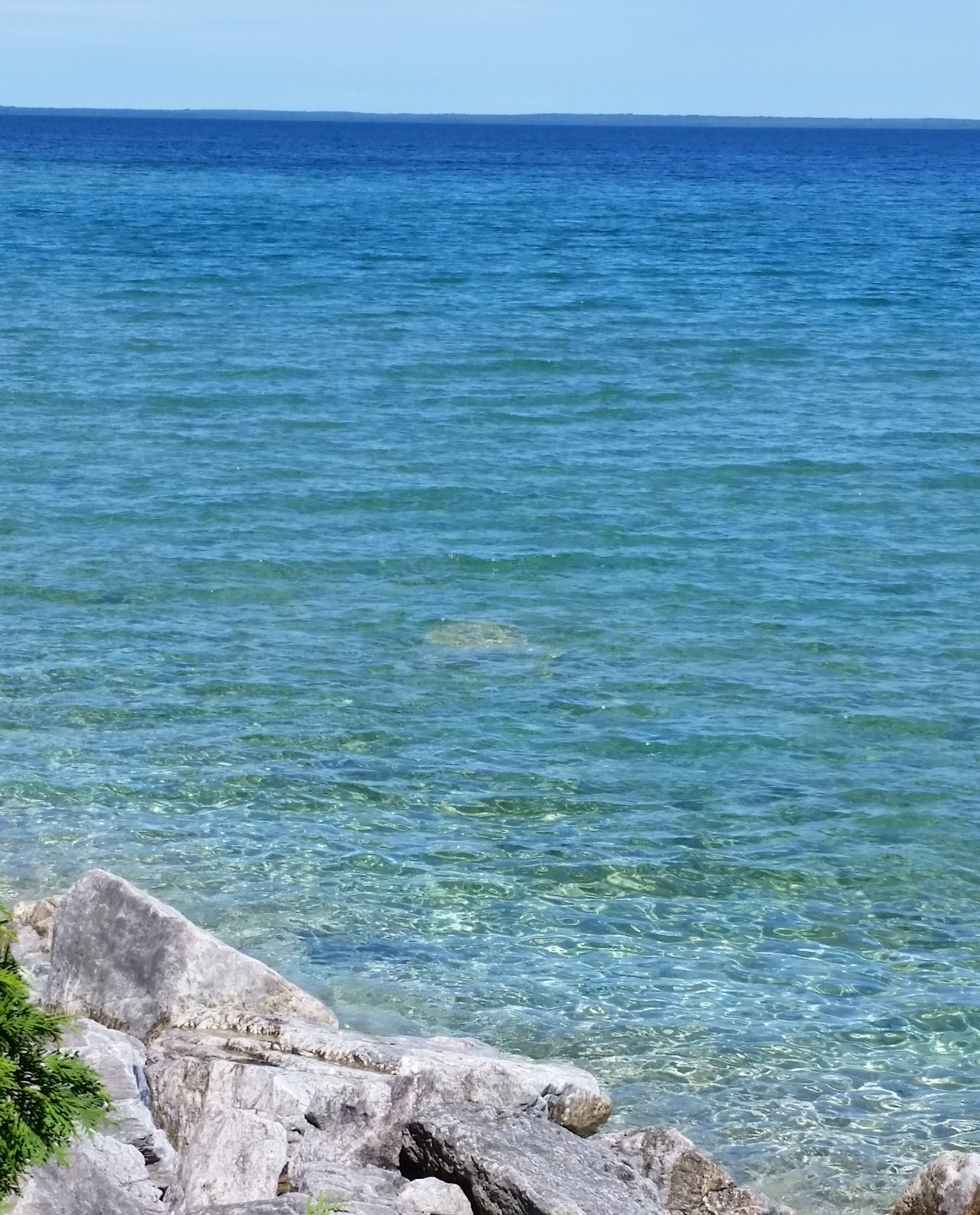
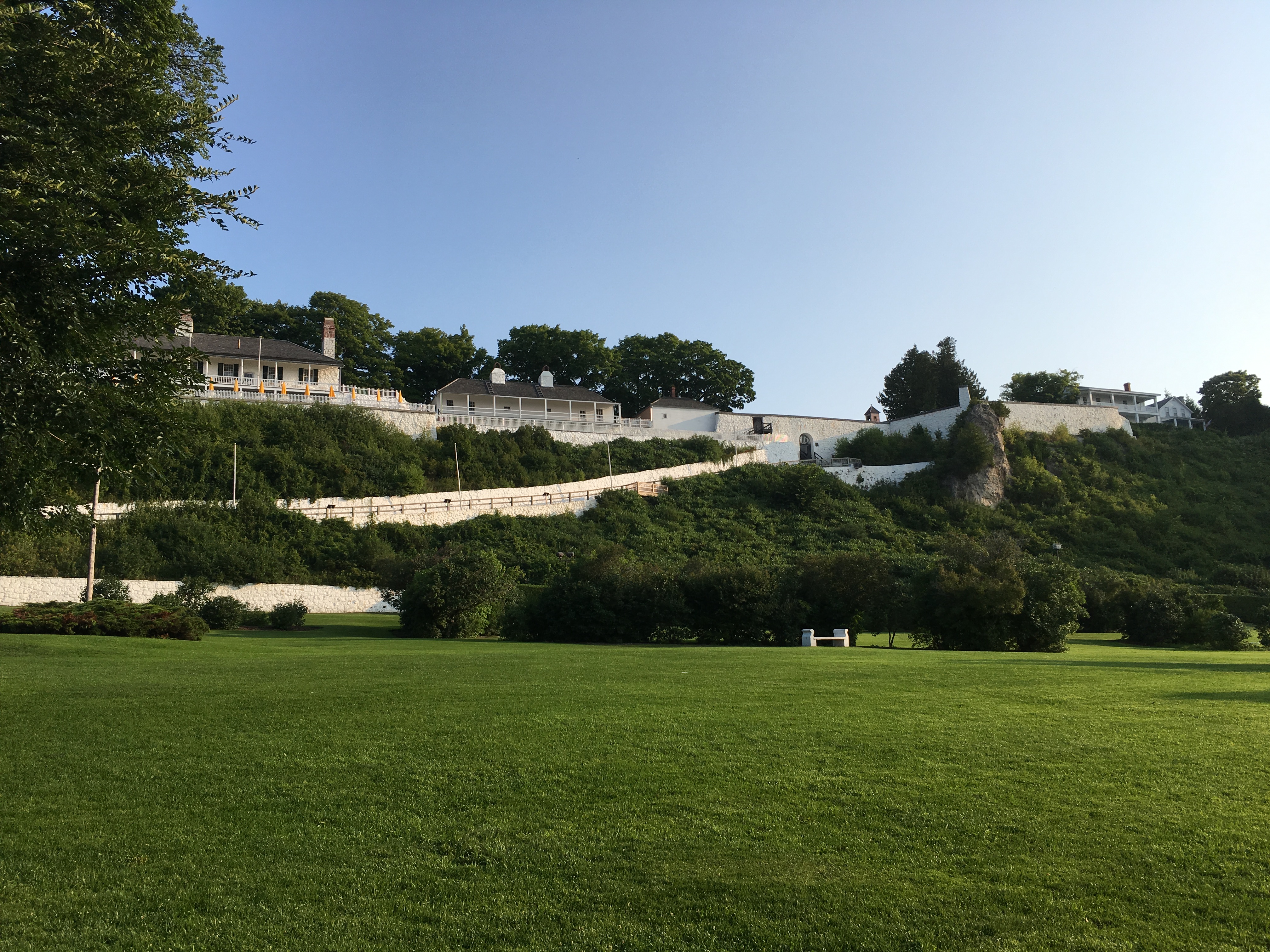






Mount Rainier National Park, Washington, USA
Mount Rainier is a Neapolitan sundae piled atop the Cascade Mountains. At its tapered peak, a fat scoop of vanilla ice glitters. Above it a perfect dollop of whipped-cream cloud is pinned to the sky, indifferent to the winds pouring in from the Pacific. The sundae is no match for the fierce August light, which melts the glaciers into crystalline rivers and the ground into rich chocolate mud that squelches beneath my boots. Late summer meadows blanket every scrap of land not cloaked in snow. They shimmer in technicolor, as though a ham-fisted child was given free reign with the sprinkles and she flung handfuls as far as her tiny arms would allow. The landscape’s whimsy is almost enough to make me forget that I am standing on a slumbering volcano.
Almost.
My squelchy steps scare up an army of pint-sized sub-alpine mammals, each one cuter than the last. Round-bodied pika and marmots and ground squirrels pop up from the meadows, their cheeks overflowing with summer treasures of golden seeds and grasses ready to be tucked away into their winter larders. Without fail they all drop their spoils and bolt away to a sensible distance before turning around to scream at me. Hey lady! they squeak indignantly, get lost. I hurry on to let them continue. The August sun burns my skin today, but beneath the heat lies an undercurrent of frigid air seeping down from the volcano’s peak that reminds me winter is never far away up here in the alpine world.
In confirmation, I enter a copse of stunted trees that twist out of the ground like they keep getting lost on their journey towards the sun. Winter after winter they bend under literal tons of snow that fall upon their bodies, contorting themselves in a desperate bid for survival. A tree that barely grazes my knee may have already spent a century yearning for the sky. But a century spent lost between Earth and sky is still a century of life, and what a life it must be in this miraculous ice cream sundae world: drinking snowmelt and clear sunlight, kept company by endless meadows, whose equal I have not seen before or since.


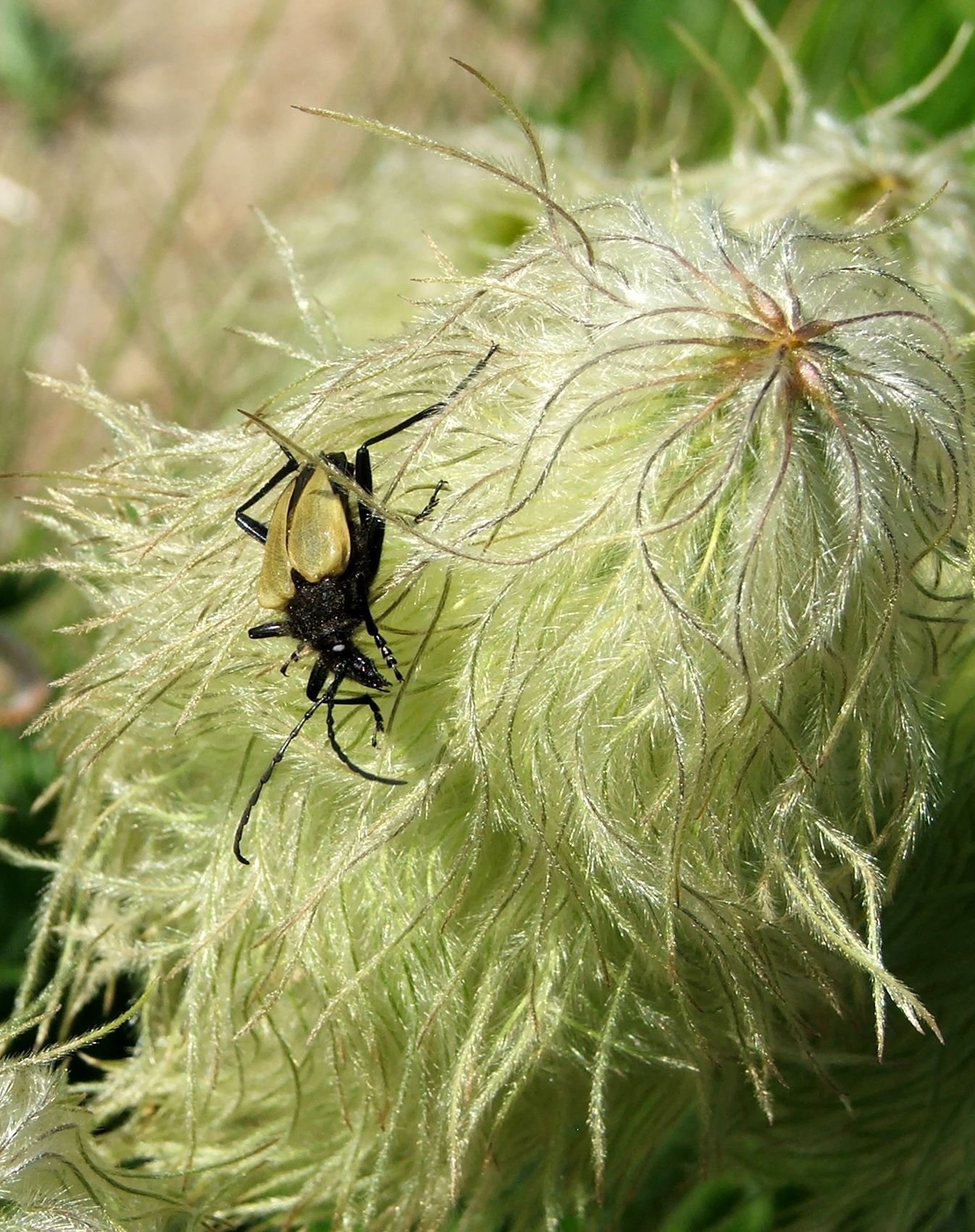


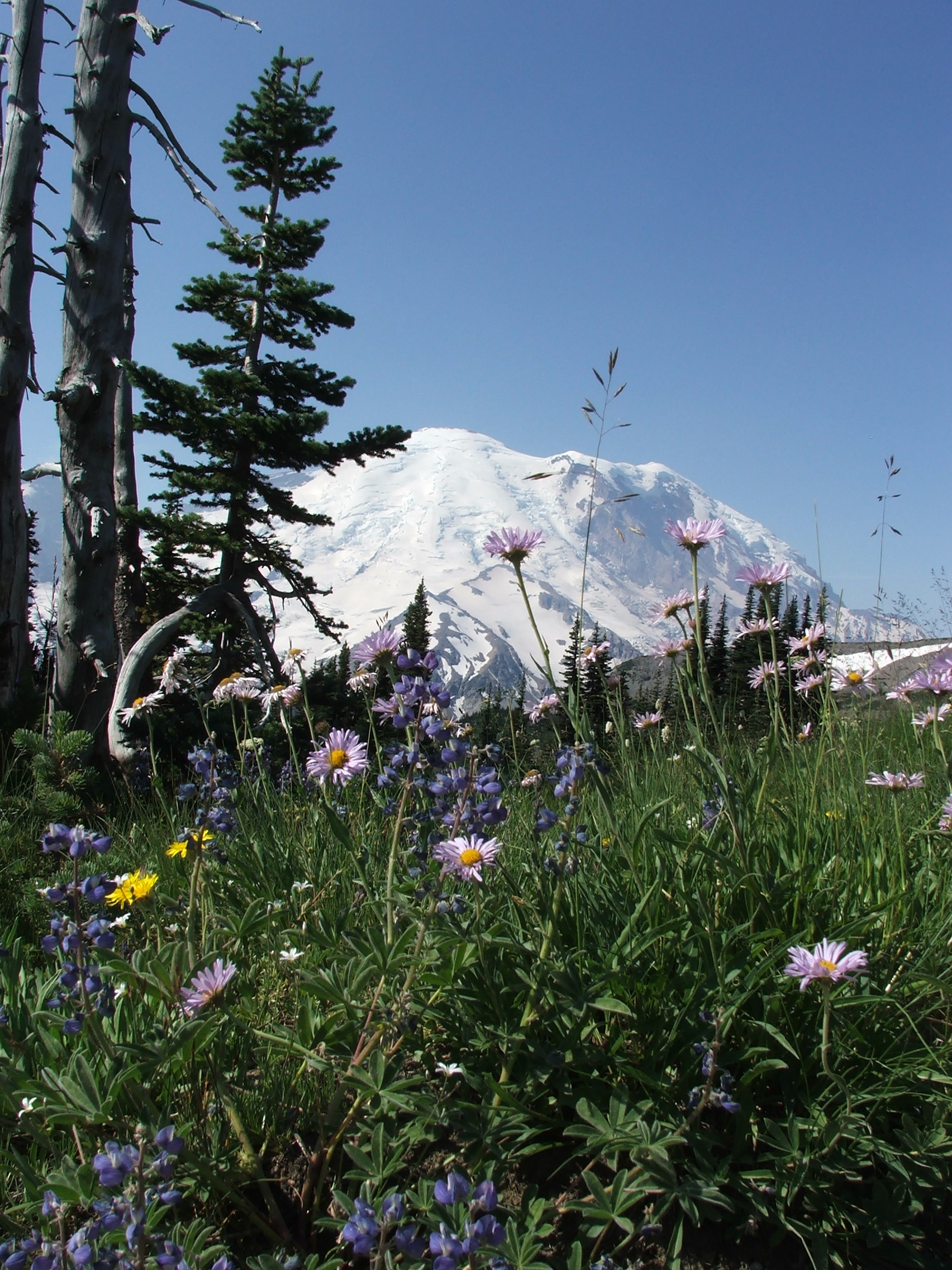


Rocky Mountains, Alberta, Canada
Autumn : The Plain of Six Glaciers
The mountains have festooned themselves with a golden cape to celebrate the arrival of fall. Quaking aspen, living up to their name, shiver their lemony leaves at the slightest hint of breeze. The larch notice and turn themselves to saffron so as to not be outdone. The other conifers can’t be bothered with costumes and simply go to sleep. I can sympathize with the latter. The Plain of Six Glaciers is as stunning as it sounds, but it is reached by a path that is unidirectionally up. We’re four miles in and I could do with a nap, or at least a nice hot cup of joe. The path spits us out onto a razor-thin glacial moraine and my exhaustion evaporates, both because of the breathtaking view and because I know we’re nearing the end of the trail, where an unlikely Himalayan-style tea house sits waiting to dole out the caffeine. I pause for a moment and take in what is essentially the world’s slowest waterfall: mountaintop glaciers pouring into other glaciers, far below in the valley. From this lofty perch I can see the aquamarine flashing in the crevasse depths. I shiver and continue on, unable to resist the promise of a warm cup to wrap my hands around.
Winter : The road to Moraine Lake
I look out into a winter wonderland through a window dressed in hoarfrost. This window is not made of traditional glass, however: it is my own eyelashes, gilded in crystal by the 30-below temperatures. Every shift of my gaze begins and ends with an explosion of glitter. Billowing clouds of warmth pour from my lungs and I am a dragon, providing the raw materials for the cold to paint its art upon my face. The only sound is the gentle swoosh of my cross-country skis across snow, and I am grateful for the groomed tracks since my dragon-breath has iced my glasses beyond all possible use and I’ve long since removed them. All I see is glitter and shadow, blurred by myopia into simple blobs of color. The sun tracks the spine of the Rockies, tossing just enough pink-gold light over the peaks and into the valleys to illuminate the snow-laden spruce through which I glide. A few moosetracks and rabbit trails are the only blemishes upon the perfectly smooth blanket of fresh snow. Two other mad humans on the trail are the only other incontrovertible signs of life. A few short hours of light are all I get before the Rockies finally clip the sun out of the sky. I turn tail and glide back down the darkening mountain, losing myself in a blur of misty lilac shadow.
Spring : Jasper
May is a spring-loaded trap designed to catch winter by the paw and hold it just long enough for the orchids and larches and butterflies and bears to wake up and carry on the tradition of life. The melting lakes are Tahitian blue and I happily stick my feet in their waters, even though there’s more than a few chunks of ice still floating around. My body is inured to the cold after experiencing entire weeks where the mercury never made it above -30 degrees Celcius/Fahrenheit (the only temperature where the scales agree: it is freakin’ cold). Yet even as my toes go numb, the air is warm and the hills are green: those clever conifers that simply rolled over into winter sleep have awoken bright and ready to drink the sunlight. Calypso orchids huddle underneath, like tiny cheerleaders ready to herald in the coming summer. It better hurry. I think I saw winter already trying to wrestle free from its trap…

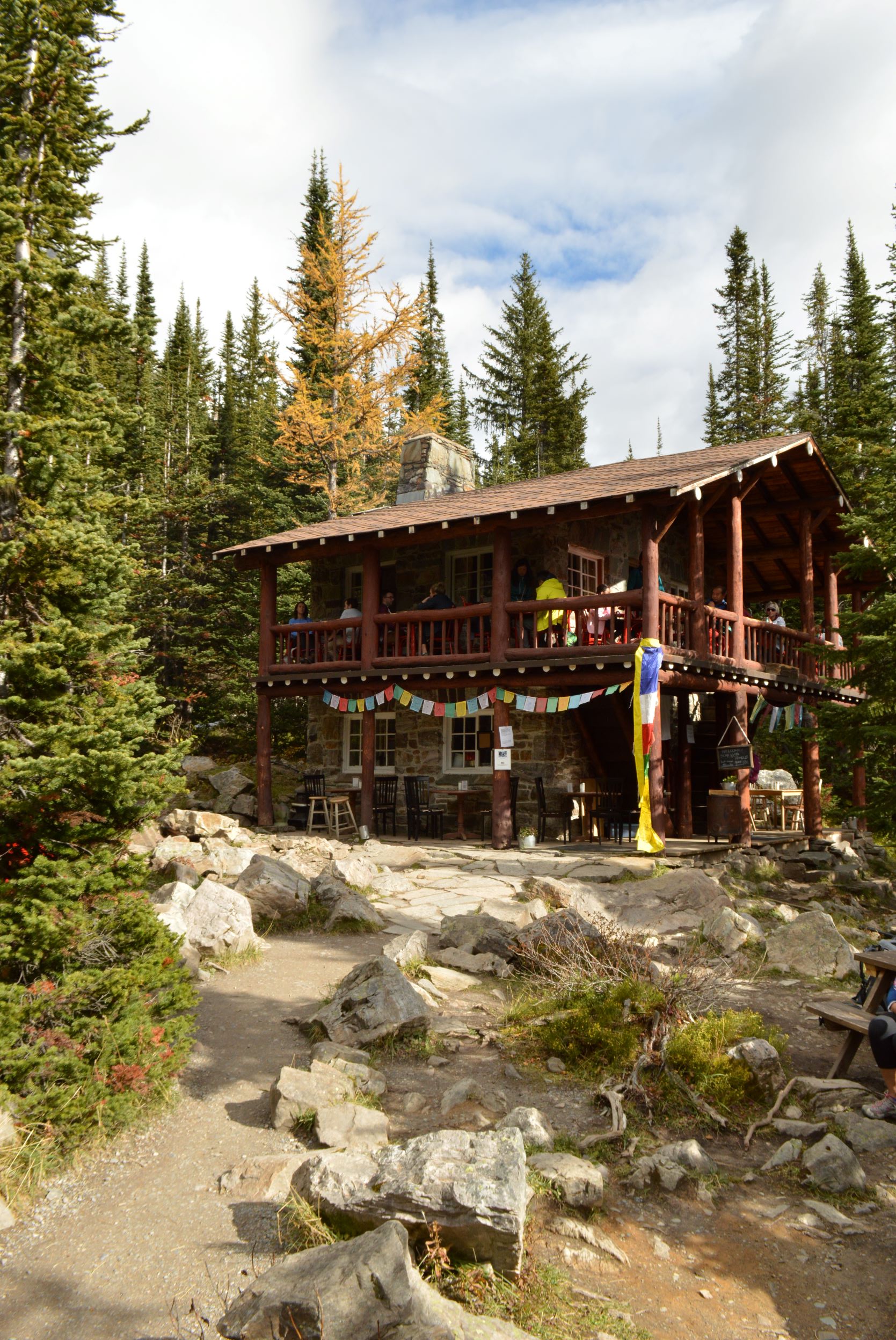

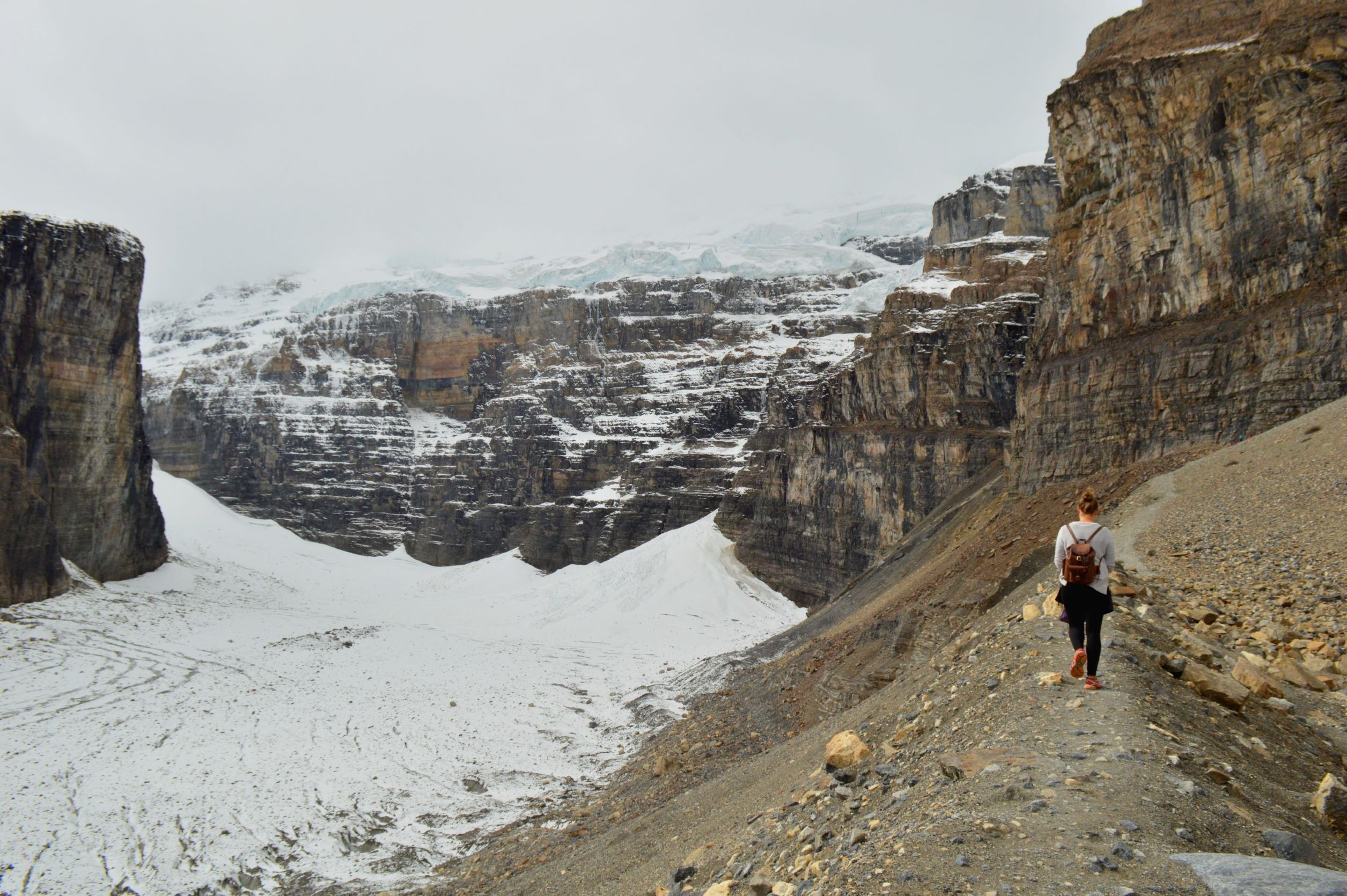
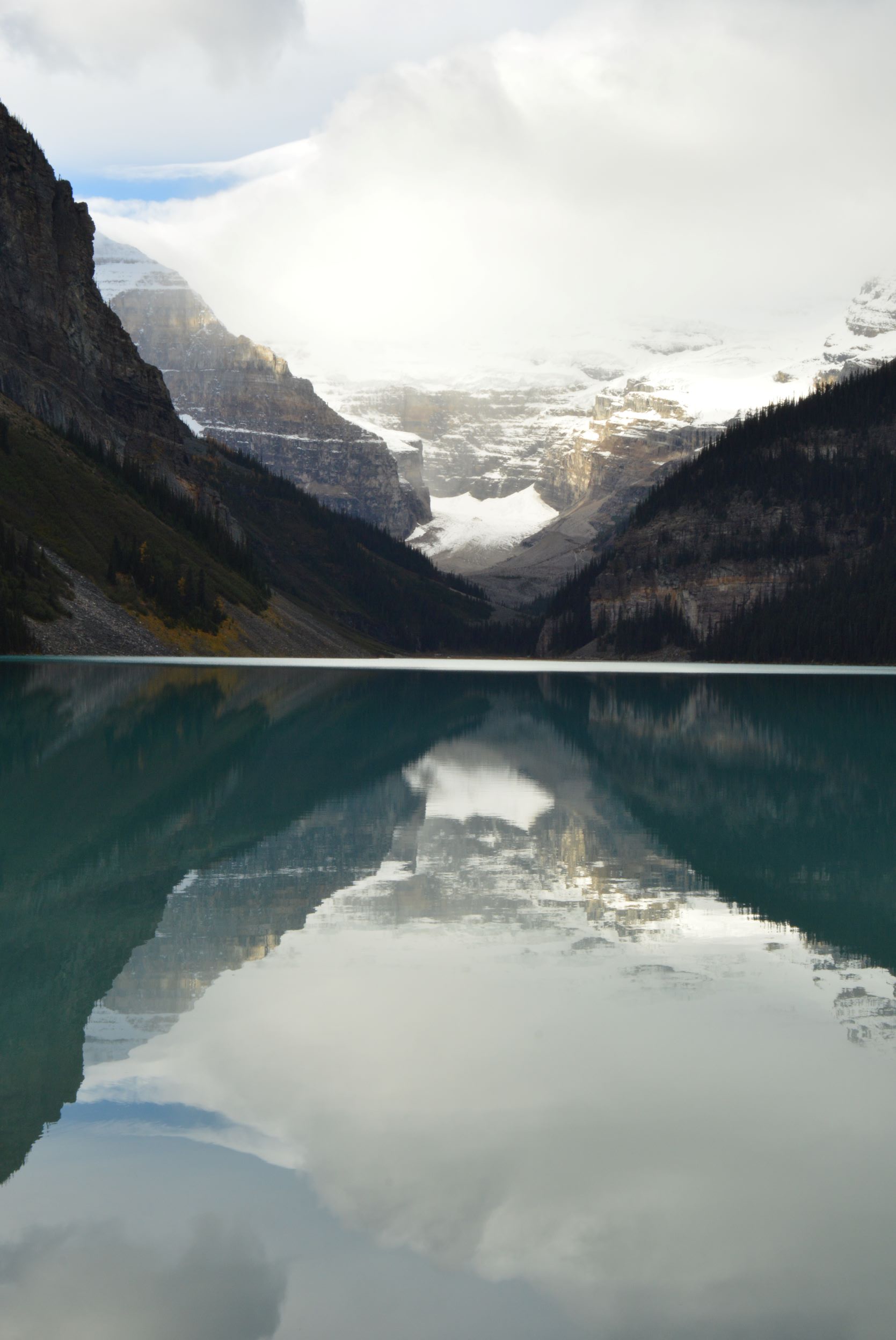









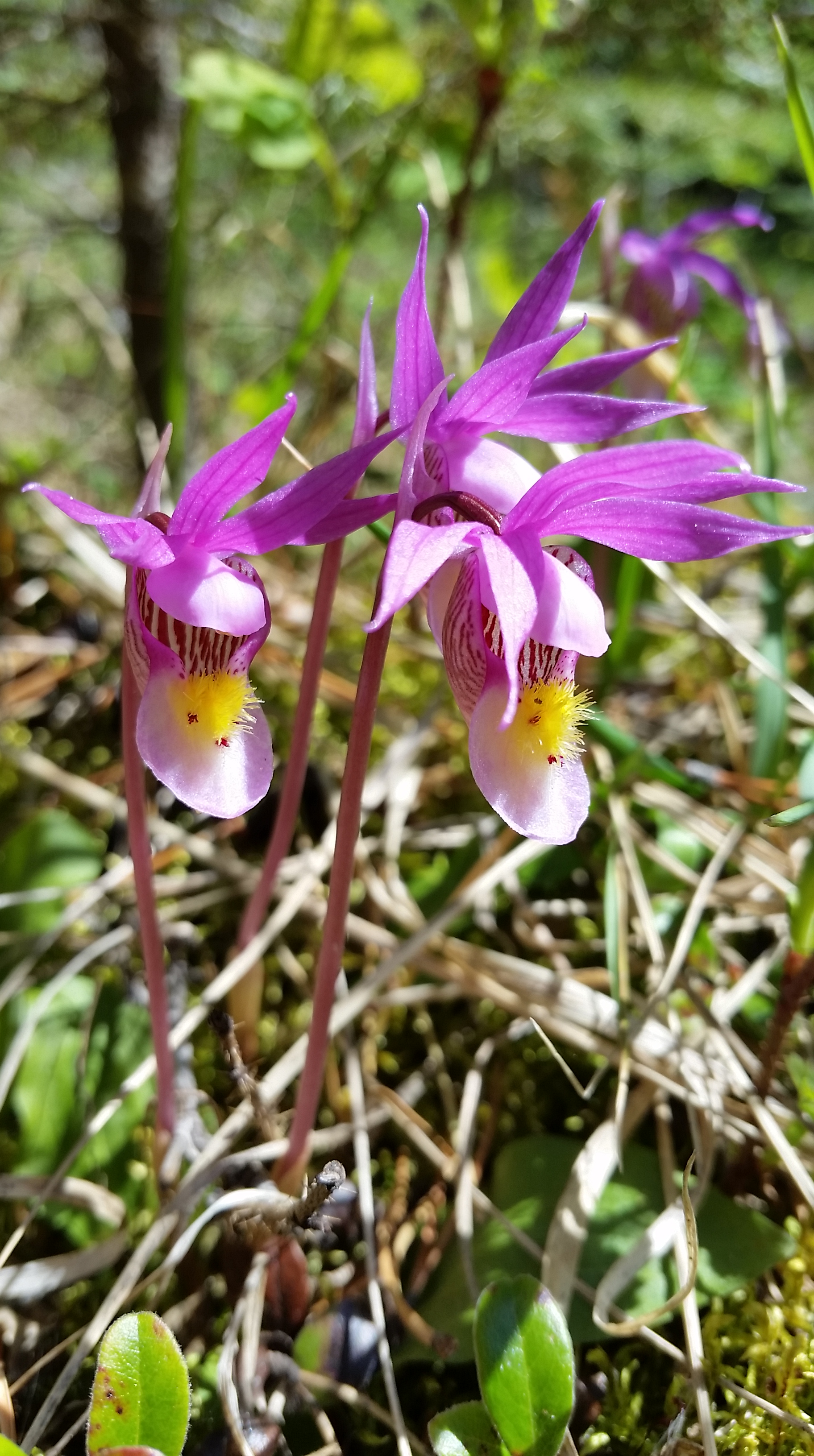
Your writing and picture transform my narrow existence , Jill. Thank you for letting me experience your wonderful, worldwide travels.
LikeLike